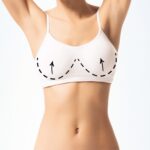What is vascular surgery? What other things does it correct besides varicose veins?
Angiology and Vascular Surgery is the medical-surgical specialty that is responsible for the study, prevention, diagnosis, and treatment of vascular pathology, that is, of diseases that affect the arteries (ischemia or irrigation deficit, aneurysms or pathological dilatations), to the veins (varicose veins, venous thrombosis) and the lymphatics (lymphedema). Likewise, he treats with special dedication the disease known as “Diabetic Foot”.
How do varicose veins affect people?
They affect two aspects, which usually coexist; From a medical point of view, with discomforts that reduce the quality of life of those who suffer them, typically suffering pain, swelling, heaviness, fatigue, and cramps in the lower limbs, especially when standing (natural posture in our day to day), and in advanced cases even produce ulcerations in the ankles, and from an aesthetic point of view, of course, it can become a complex patient, affecting their way of dressing or the activities they perform, to prevent them from being see said varicose veins.
Can varicose veins be prevented?
There is a family component, tendency, and predisposition to suffer them that we cannot avoid, but we can do our part not to favor their appearance, or avoid their development if we already have them. It is very important to watch your weight, carry out a healthy diet, perform daily physical exercise, etc.
What techniques do you use to correct the problem of varicose veins? What does each of them consist of?
Doctor specializing in Angiology and Vascular Surgery uses three techniques for the treatment of varicose veins:
- Surgery: for large varicose veins, using the CHIVA strategy (Hemodynamic Cure of Ambulatory Venous Insufficiency), which redistributes the flow of the insufficient superficial venous system towards the deep one through staggered saphenous ligations, preserving it, together with microsurgery of the varicose bundles, removing them through millimeter incisions. This conservative, not very aggressive surgery can be performed in many cases under local anesthesia. It is a technique that requires extensive ultrasound knowledge for proper strategic planning.
- Sclerotherapy: by injecting a sclerosing agent into the vein, either in liquid forms, such as microfoam, or cold (cryosclerosis), damaging its endothelium, to finally produce fibrosis of it, resulting in its disappearance. It is especially used for telangiectasias and spider veins, and anesthesia is not required with this technique. It can be combined with surgery.
- VenaSeal®: technique guided with ultrasound, which uses for large varicose veins, without surgery, through a small puncture, a compound of cyanoacrylate as biological glue, which, once released inside the saphenous, polymerizes by gluing together the walls of the same and canceling by reaction of foreign body and fibrosis the entire diseased venous axis. It does not produce thermal damage unlike radiofrequency or endolaser, so there is no risk of neurological injury or skin burn, and it does not need protective tumescence (which is injected by multiple punctures throughout the saphenous tract), which avoids the use of anesthesia, and makes the technique practically painless. It also avoids the need to wear stockings in the postoperative period.
What is the postoperative or post-treatment care when removing varicose veins?
It depends on the type of technique used. In the case of surgery, it is generally necessary to receive an elastic compression of the treated limb, either with a bandage or with an elastic stocking, postural measures and controlled progressive exercise (there is no need to rest), the proper care of the wounds, and treatment with anti-inflammatory and heparin. In the case of sclerotherapy, elastic compression and the use of certain creams are especially necessary, and after performing the VenaSeal® technique, no postoperative treatment is usually needed, as it is a painless technique, no wounds are made, only a minimal puncture with local anesthesia, which does not produce bruises or scars, compression stockings are not required, and incorporation into daily activities can be immediate.
What side effects can occur after surgery to remove varicose veins?
Those of any surgical intervention and depending on the technique, but being rare in the case of varicose veins, and when they appear, they are usually mild, especially in the form of bruises, bleeding, or infection. Allergic reactions or more serious adverse effects, such as venous thrombosis or pulmonary embolism are rare. However, we emphasize the need to carry out a detailed medical history and examination of the patient, to try to personalize the treatments as much as possible, and to minimize risks as much as possible.
What differentiates vascular surgery from angiology or sclerotherapy?
Angiology and Vascular Surgery are part of the same medical-surgical specialty, and the angiologist and vascular surgeon, as a specialist in venous pathology, among others, and therefore, a specialist in varicose veins, performs sclerotherapy as part of their treatment. , after carrying out a global assessment of the disease using clinical history and an echo doppler study, essential for an adequate selection of the technique that best suits each patient.
What results are expected after vascular surgery?
Above all, the relief of the symptoms associated with varicose pathology, with a significant increase in the quality of life in the most affected patients, and also an aesthetic improvement by eliminating or reducing varicose veins.
How do keep good results?
It is very important that, since it is a chronic disease, and because of the lifestyle that favors its appearance (prolonged standing, sedentary lifestyle, etc.), the patient understands that there will always be the possibility that they will reappear and some need to be repeated. treatment, but if you take care, maintain adequate weight, exercise, and wear stockings especially when you are going to be standing for a long time, you can maintain the result for longer.
Can it be combined with other types of treatments that address the aesthetics of the legs?
Once the inflammatory symptoms have disappeared and the wounds that have been required to carry out the treatment of varicose veins have healed, there are no contraindications in principle to perform other treatments on the lower limbs that the patient may need.
How is the diagnosis carried out to choose the most appropriate treatment?
It is essential to carry out a detailed clinical history and a meticulous physical examination by the specialist, to identify situations that may be associated with the development of varicose veins, and assess possible risks and benefits, as well as the performance of a venous Doppler, in which it is an expert angiologist and vascular surgeon, who determines the origin and type of varicose veins, and with all this information to be able to choose the best treatment and personalize it for each patient.




GIPHY App Key not set. Please check settings